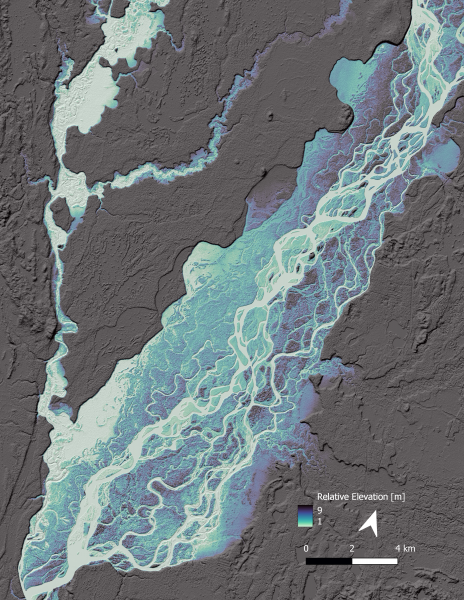Channel Belts Hold Clues to Past
December 5, 2022

Long after a river has dried up, its channel belt lives on.
Made up of swaths of sediment surrounding the river, channel belts, once hardened into rock, preserve the paths of rivers that once were. However, reconstructing details about an ancient river from channel belt deposits is a notoriously difficult task.
New research from scientists in the Jackson School of Geosciences Department of Geological Sciences is making progress on that front. Lead author Tian Dong, a postdoctoral researcher, said that by analyzing modern rivers, they have been able to come up with a rule that connects channel belts to river patterns, finding that, in general, the more channels a river has, the narrower its channel belt.
Because the physics shaping rivers is the same over time and place, the rule should hold for ancient rivers and rivers on other planets, too, said co-author and Assistant Professor Timothy Goudge.
“We can look at a river deposit from 100 million years ago on Earth or from 3.5 billion years ago on Mars, and we can say something about what the actual river looked like,” he said.
The researchers discovered the rule by analyzing 30 modern rivers and their channel belts, drawing on high-resolution images and elevation data captured by satellites. The results were published on June 13 2022, in the journal Geology.
Back to the Newsletter